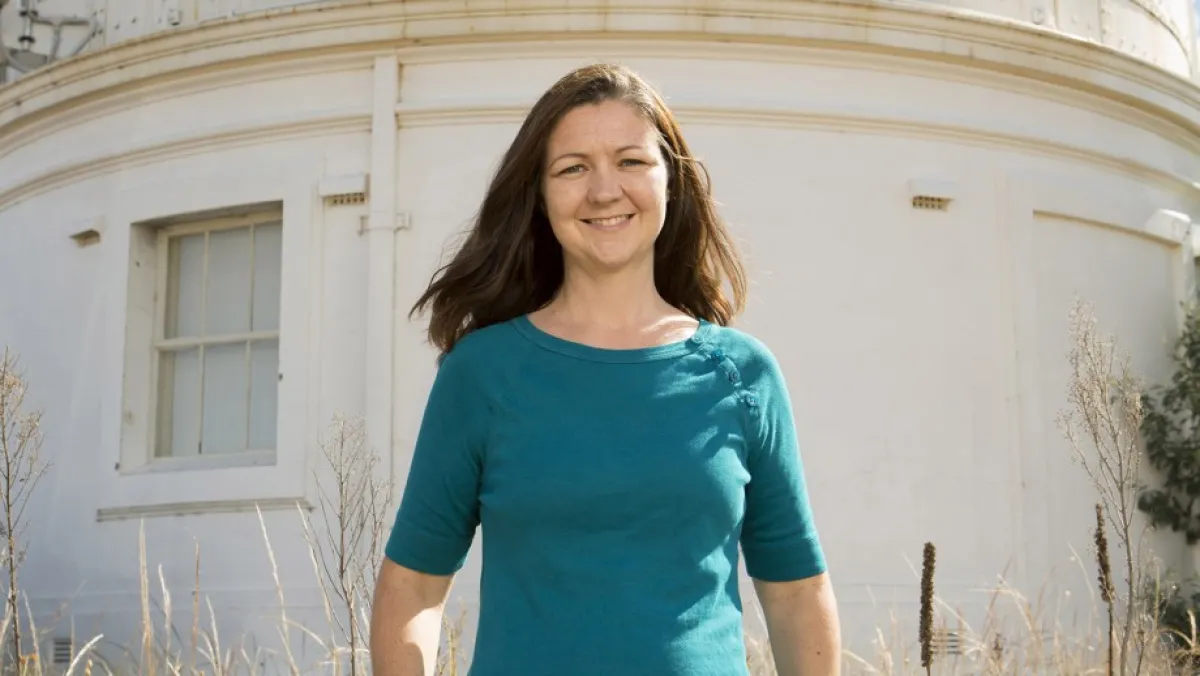RSAA to host new $30m 3D astronomy centre

The Australian National University (ANU) will lead Australia's next wave of research into the Universe and the formation of the basic elements, using new 3-D technology to explore the Universe, after winning a $30 million Centre of Excellence from the Australian Research Council (ARC).
The new ARC Centre of Excellence for All Sky Astrophysics in 3 Dimensions (CAASTRO 3D) will be led from the ANU Mount Stromlo facilities in Canberra and will ensure Australian astronomers, astrophysicists and engineers will play a central role in the exploration of the Universe over the next decade.
Led by Professor Lisa Kewley from the ANU Research School of Astronomy and Astrophysics, the new centre will use new 3-D technology to help unlock the secrets of the early universe and the development of elements that make up the periodic table.
"We will be investigating how the Universe formed its first matter in the dark moments after the Big Bang, how the first stars and galaxies formed and evolved into galaxies like our Milky Way, and how the stars created the chemical elements in the Universe," said Professor Kewley, an ARC Laureate Fellow.
ANU Vice-Chancellor Professor Brian Schmidt AC congratulated Professor Kewley on the new Centre of Excellence.
"The new CAASTRO 3D Centre of Excellence is a magnificent achievement and underlines the strength of top-class research at ANU, particularly our Research School of Astronomy and Astrophysics," Professor Schmidt said.
"I look forward to working with Lisa and the CAASTRO 3D team, and look forward to the amazing new discoveries that will help the world better understand the Universe and our place in it."
CAASTRO 3D will involve around 200 investigators at institutions across Australia and overseas, including astronomers, astrophysicists, engineers and computer scientists.
It will help Australian scientists and engineers develop and use high-technology instruments that will be crucial for the next generation of giant optical telescopes around the world, such as the Giant Magellan Telescope, as well as the radio telescopes such as the Square Kilometre Array.
"The world is going to make a major leap forward in telescope size over the next five to 10 years with the Square Kilometre Array radio telescope in Australia and South Africa, and the Giant Magellan Telescope under construction in Chile," Professor Kewley said.
"Australia is building crucial 3-D technology for those giant telescopes. CAASTRO 3-D will build the research capacity and expertise to lead the discoveries on those next generation of telescopes.
"By using Australia's 3-D technology on current optical and radio telescopes, we'll be able to build a picture of how galaxies formed and evolved across cosmic time."
The technology will help scientists build 3-D models which will pinpoint which materials formed in the early Universe, and map where those elements and stars were born and how they evolved into the universe that we live in today.
The new Centre of Excellence will also include a national program for telescopes in schools to encourage the next generation of young scientists, and Indigenous engagement through the CAASTRO Astronomer in Residence Program at Uluru.
The Centre of Excellence will also see an expansion of CAASTRO in the Classroom, where astronomers share their discoveries with school students. It will also produce full-length productions for planetariums world-wide to share the wonders of the Universe with the public.
"CAASTRO-3D will propel Australia to the forefront of astronomical research for the coming decade, to be ready for the major breakthroughs that will be made with the next generation of telescopes that Australia has invested in," Professor Kewley said.
A video of Professor Kewley is available on youtube.
